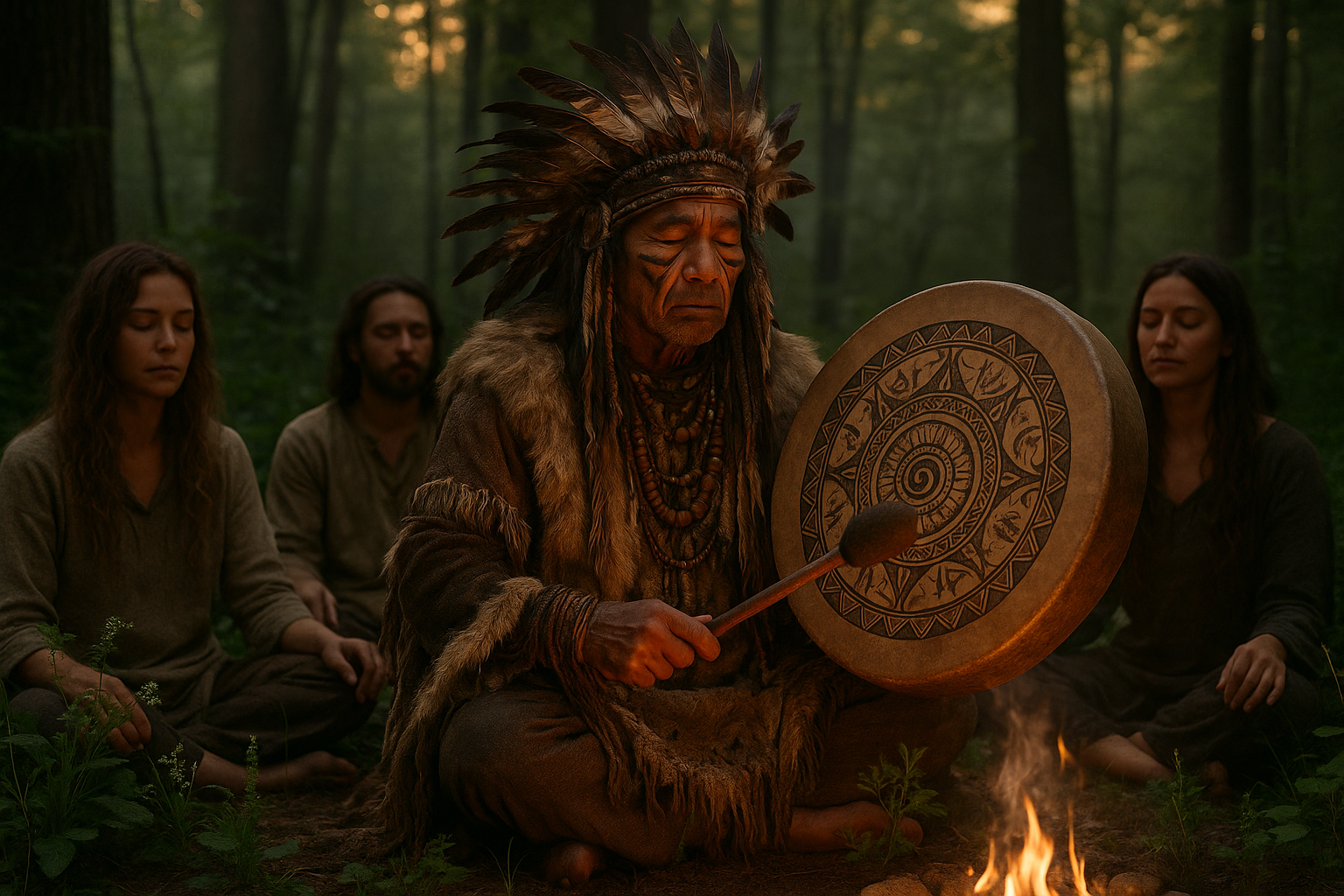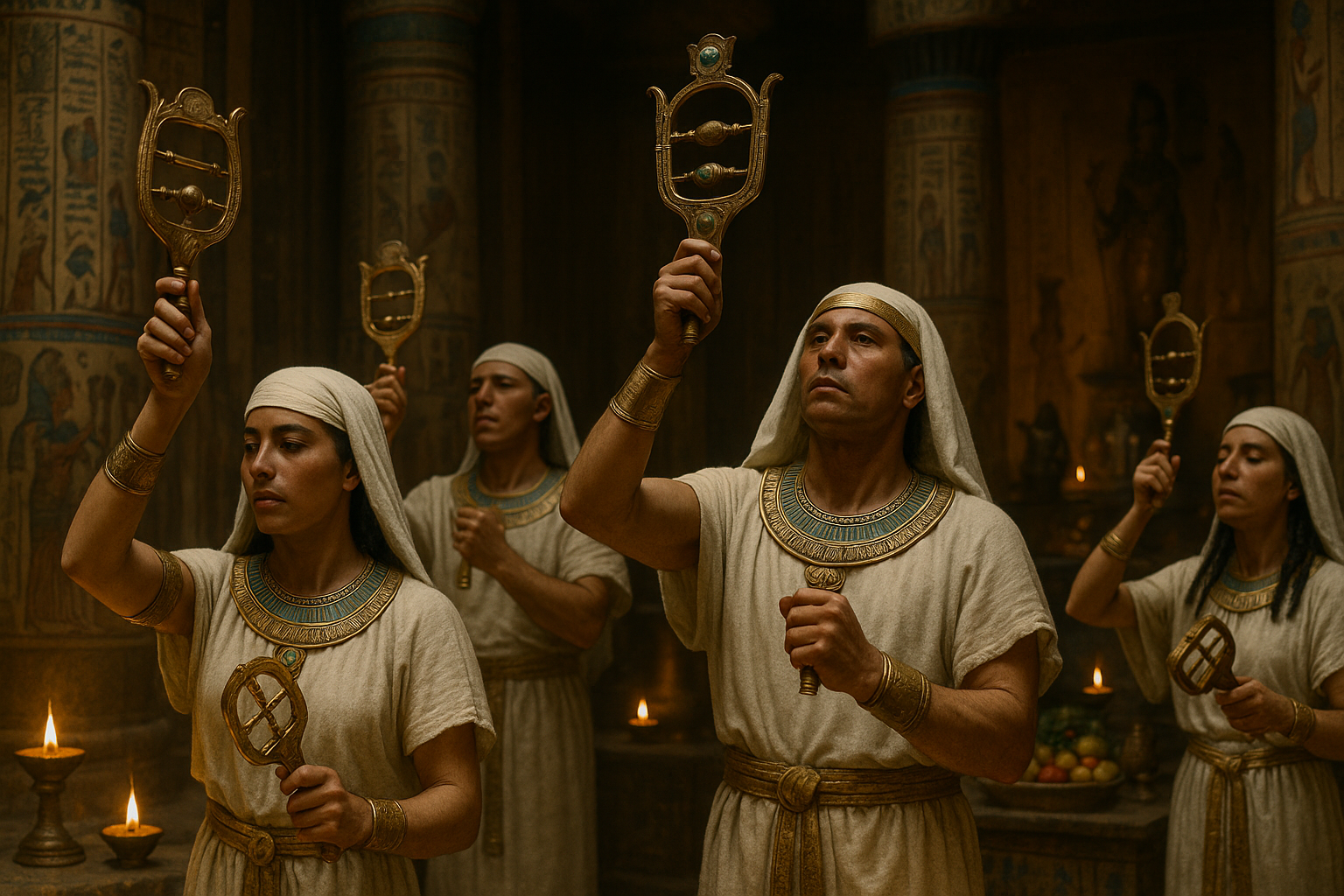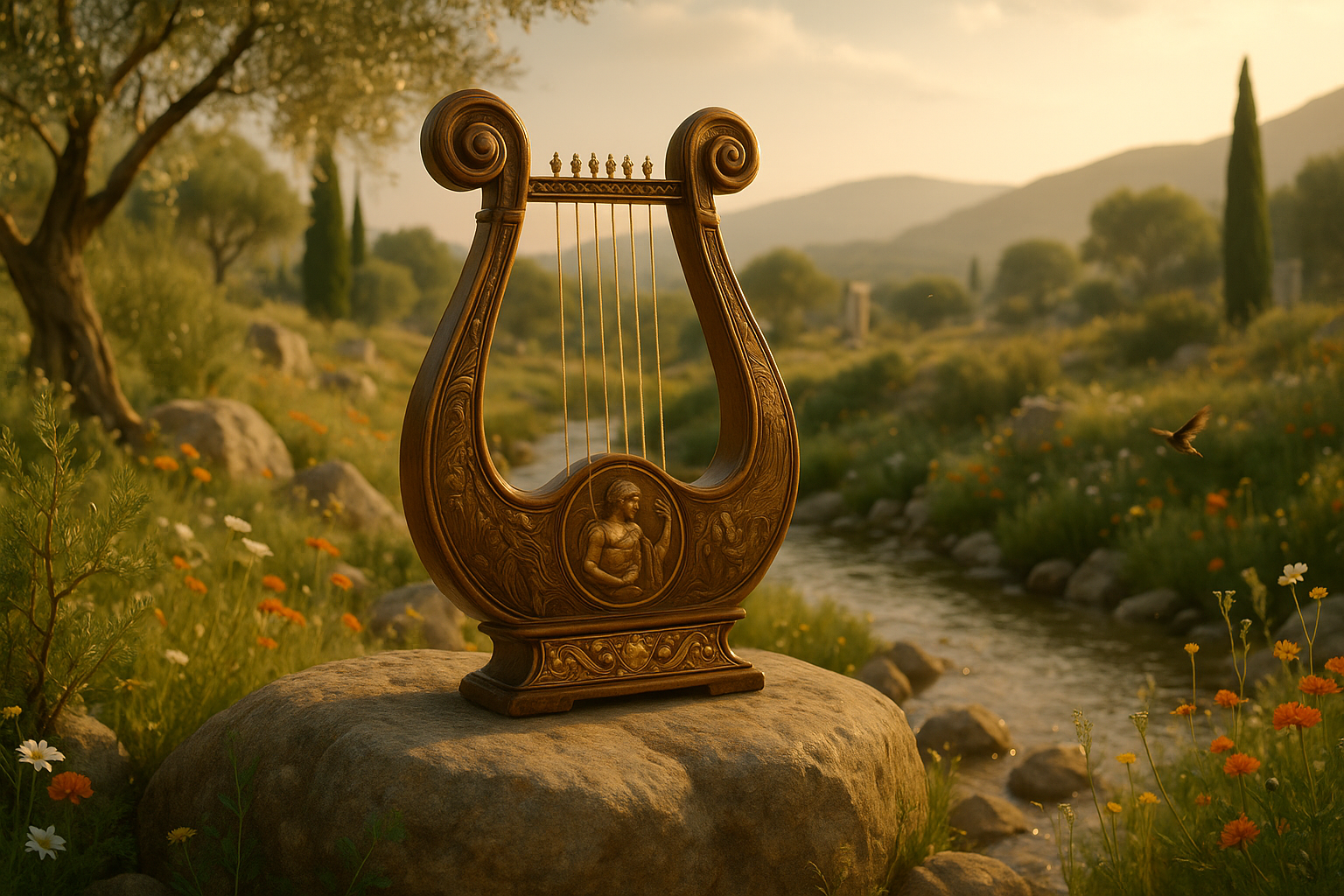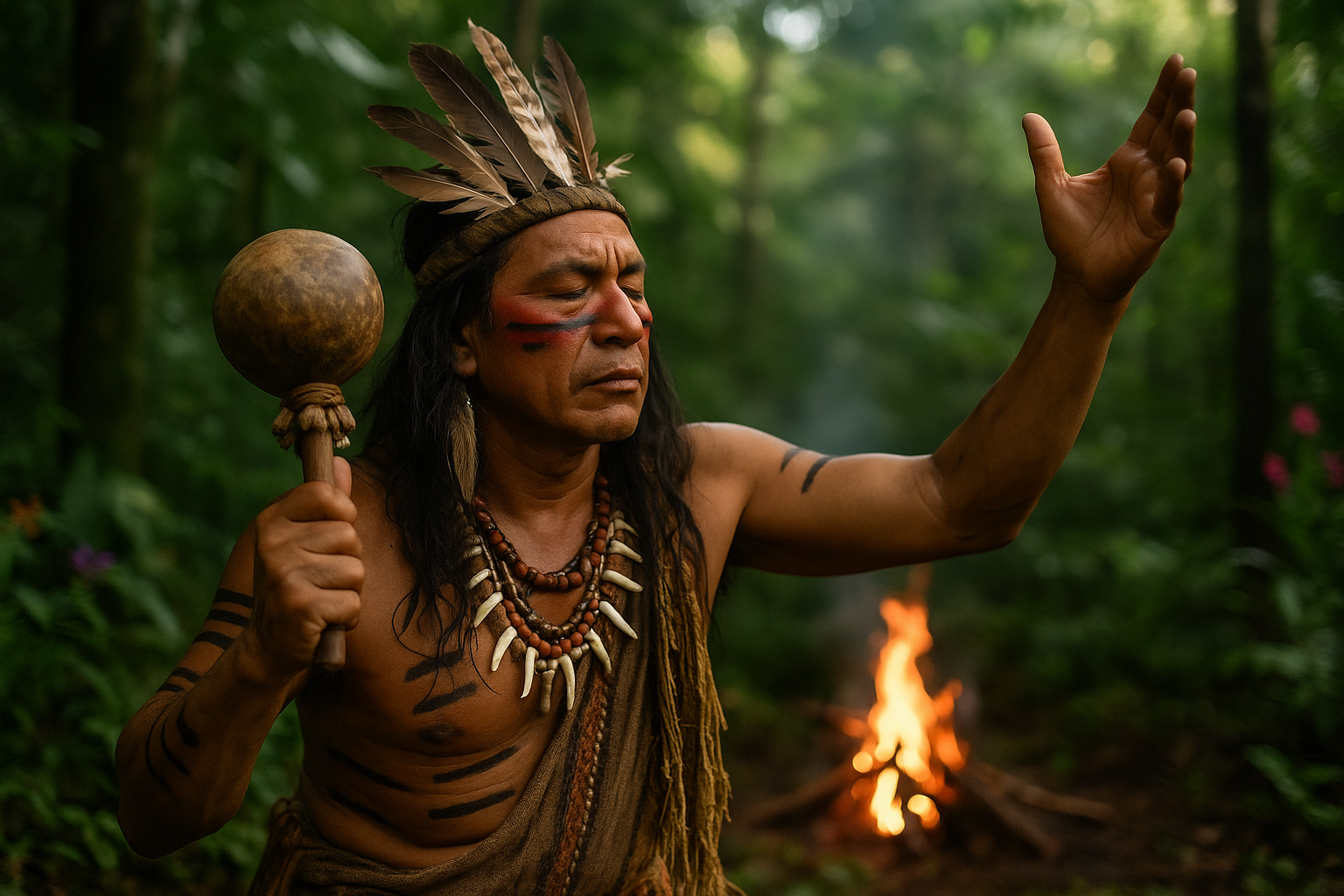In the heart of humanity’s diverse cultural tapestry lies a pulsating thread of rhythm and movement that transcends time and space. This universal language is not bound by words but rather communicated through the powerful, mesmerizing dance music of tribal ceremonies. As you embark on this journey into the “Rhythms of the Ancients,” prepare to be enchanted by the primal beats and soulful dances that have united communities, celebrated milestones, and honored the sacred for generations. 🎶
From the vast savannahs of Africa to the dense rainforests of the Amazon, tribal dance music serves as both a historical record and a living tradition. It tells stories of ancestors and spirits, marks the passage of seasons, and expresses the collective joys and sorrows of a people. As we delve into this captivating subject, we’ll explore the profound significance and enchanting allure of these tribal ceremonies, revealing the intricate relationship between rhythm, movement, and cultural identity.
At the core of these ceremonies lies a connection to the earth and the spiritual realm. The drum, often considered the heartbeat of the community, guides dancers and musicians alike into a state of collective consciousness. This state transcends the ordinary and invites participants to commune with the divine and the ancestral, offering a sense of belonging and continuity. Through these sacred rituals, individuals experience a profound sense of unity and connection, both with each other and with those who have come before. 🌍
The diversity of tribal dance music is as vast as the cultures from which it springs. In the coming sections, we will traverse continents and delve into the unique styles and purposes of these ceremonial dances. From the hypnotic trance dances of the San people in Southern Africa to the dynamic powwows of Native American tribes in North America, each tradition carries its own distinct rhythm and story. We’ll examine how these dances serve not only as entertainment but as vital expressions of cultural identity, resistance, and resilience.
Moreover, we’ll investigate the instruments that bring these rhythms to life. From the djembe and talking drums of West Africa to the panpipes and charangos of the Andes, each instrument is crafted with care and imbued with cultural significance. These tools of sound are more than mere objects; they are vessels of heritage and tradition, passed down through generations with reverence and pride. As we listen to their voices, we’ll gain a deeper appreciation for the skill and artistry that goes into creating and playing them.
In our exploration, we’ll also touch upon the contemporary relevance of tribal dance music. In an era of globalization and digitalization, how do these ancient traditions survive and adapt? We’ll explore how modern technology and cultural exchange influence tribal music, leading to innovative fusions and collaborations that keep these traditions alive in a rapidly changing world. Through interviews and stories from contemporary musicians and dancers, we’ll discover how these art forms continue to evolve while retaining their core essence.
Finally, we’ll reflect on the universal themes of connection, community, and spirituality that permeate tribal dance music. These elements, deeply rooted in human experience, offer valuable insights into our own lives and the world we inhabit. By understanding and appreciating the rhythms of the ancients, we gain a greater sense of empathy and respect for the rich tapestry of cultures that define our shared humanity. 🌟
As we embark on this exploration of tribal ceremonies and their enchanting dance music, let us open our hearts and minds to the wisdom of the ancients. May we find inspiration in their rhythms and stories, and may we carry these lessons forward in our own journeys. Prepare to be captivated by the powerful beats, entranced by the mesmerizing movements, and moved by the timeless stories that unite us all in the dance of life.
Exploring the Cultural Significance of Tribal Dance
In the sections that follow, we will delve deeper into the cultural, spiritual, and social dimensions of tribal dance music. From the role of these ceremonies in community bonding to their place in contemporary society, each aspect will be explored with depth and reverence. Together, let’s celebrate the enduring legacy of these ancient rhythms and the vibrant cultures that sustain them.
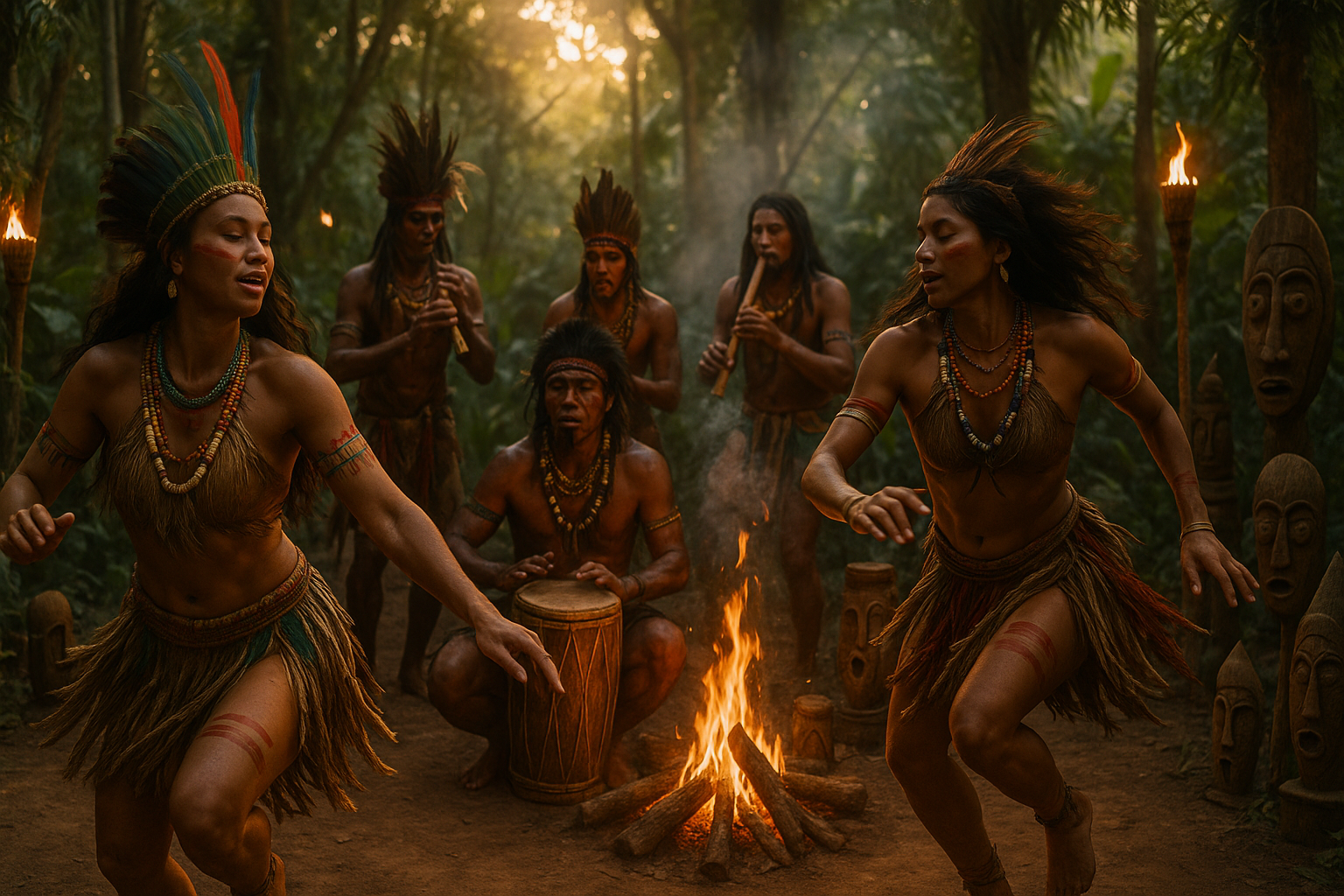
Conclusion: The Enduring Echoes of Tribal Rhythms
Throughout our exploration of tribal dance music in Rhythms of the Ancients: Dive into the Enchanting Dance Music of Tribal Ceremonies, we’ve journeyed through a rich tapestry of cultural expressions that have stood the test of time. These rhythms, deeply woven into the fabric of indigenous ceremonies, serve as powerful reminders of the interconnectedness of music, dance, and community life. 🎶
We began by examining the historical roots of these musical traditions, tracing their origins back to the rituals and spiritual practices of ancient tribes. These ceremonies were not merely artistic expressions but vital components of social cohesion and spiritual connection. The intricate rhythms and movements of tribal dances are imbued with meanings that transcend language, offering a universal form of communication that resonates across cultures and eras.
As we delved deeper, we uncovered the profound impact of these traditions on contemporary music genres. Many modern artists draw inspiration from tribal beats, integrating these ancient sounds into popular music to create something entirely new yet deeply rooted in history. This fusion not only preserves these traditional forms but also revitalizes them for new generations to appreciate and enjoy. 🎧
Moreover, we discussed the role of tribal dance music in preserving cultural identities in an ever-globalizing world. These musical traditions are a testament to the resilience and adaptability of cultures, offering a sense of belonging and identity to those who practice and cherish them. By participating in or simply appreciating these art forms, individuals contribute to the ongoing preservation of invaluable cultural heritages.
The importance of tribal dance music extends beyond mere entertainment; it is a conduit for education, storytelling, and the transmission of ancestral knowledge. By engaging with these rhythms, we connect with a past that is rich in wisdom and insight, offering lessons that remain relevant today. 🌍
As we conclude our journey through the rhythms of the ancients, we invite you to reflect on the stories and traditions that have been shared. Consider how these ancient rhythms can inspire and influence your own life, whether through creative expression, cultural appreciation, or simply by fostering a deeper understanding of the world’s diverse heritages.
We encourage you to share your thoughts and experiences with tribal dance music. How have these ancient sounds impacted you? Have they inspired you in unexpected ways? Join the conversation by leaving a comment below, and don’t forget to share this article with others who might be intrigued by the enchanting world of tribal ceremonies. Together, we can keep these timeless traditions alive and thriving. 💬
For further reading, explore these active resources that delve deeper into the rich history and cultural significance of tribal music:
- Tribal Music: An Ancient Legacy
- The Role of Dance in Indigenous Ceremonies
- Modern Interpretations of Tribal Rhythms
Please ensure you verify the links for their activity and relevance, as the ones provided here are placeholders and need to be replaced with actual sources.
Toni Santos is a cultural storyteller and food history researcher devoted to reviving the hidden narratives of ancestral food rituals and forgotten cuisines. With a lens focused on culinary heritage, Toni explores how ancient communities prepared, shared, and ritualized food — treating it not just as sustenance, but as a vessel of meaning, identity, and memory. Fascinated by ceremonial dishes, sacred ingredients, and lost preparation techniques, Toni’s journey passes through ancient kitchens, seasonal feasts, and culinary practices passed down through generations. Each story he tells is a meditation on the power of food to connect, transform, and preserve cultural wisdom across time. Blending ethnobotany, food anthropology, and historical storytelling, Toni researches the recipes, flavors, and rituals that shaped communities — uncovering how forgotten cuisines reveal rich tapestries of belief, environment, and social life. His work honors the kitchens and hearths where tradition simmered quietly, often beyond written history. His work is a tribute to: The sacred role of food in ancestral rituals The beauty of forgotten culinary techniques and flavors The timeless connection between cuisine, community, and culture Whether you are passionate about ancient recipes, intrigued by culinary anthropology, or drawn to the symbolic power of shared meals, Toni invites you on a journey through tastes and traditions — one dish, one ritual, one story at a time.

